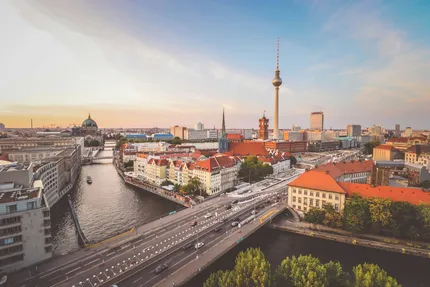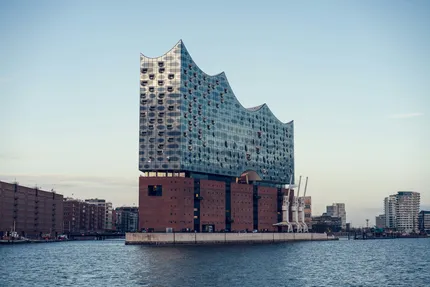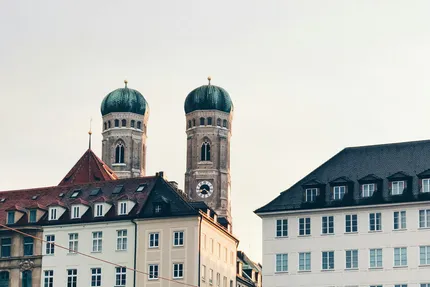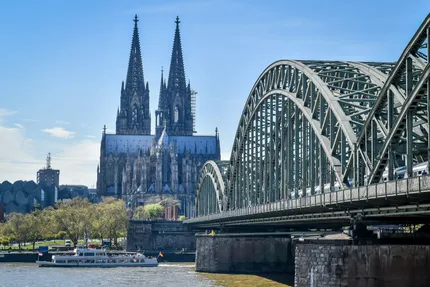CityTouring
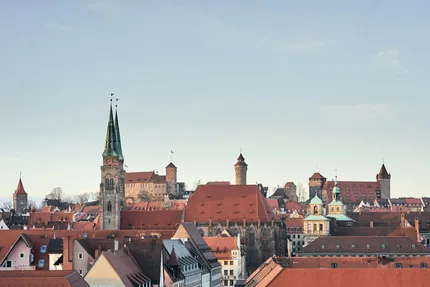
City trip to Nuremberg
GermanyNuremberg (Nürnberg) blends a compact medieval core with heavyweight museums and thought-provoking 20th‑century history. The walled Altstadt is crowned by the Imperial Castle, with views over red roofs, spires, and the Pegnitz River. Stroll past half‑timbered houses on Weissgerbergasse, cross the Henkersteg and Kettensteg bridges, and linger at the Hauptmarkt, home to the Gothic Frauenkirche and the ornate Schöner Brunnen. The Albrecht Dürer House introduces the city’s most famous Renaissance artist, while the Germanisches Nationalmuseum surveys German art and culture. Nuremberg also confronts its modern past at the Documentation Center and former Nazi Party Rally Grounds, and at Courtroom 600 in the Palace of Justice, where the postwar trials took place.
Families gravitate to the Toy Museum and the DB Museum of railways. Between sights, try Nürnberger Rostbratwurst from a grill, sample Franconian beers in a beer garden, and pick up spiced Lebkuchen. Shady squares and riverfront paths offer easy pauses between landmarks. Efficient trams and U‑Bahn make it easy to get around, and day trips to Bamberg or the craggy landscapes of Franconian Switzerland are within reach.
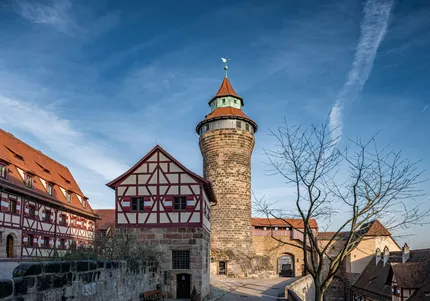
Imperial Castle of Nuremberg (Kaiserburg)
Medieval fortress dominating the skyline with sweeping views over the Old Town. Explore the Palas, Imperial Chapel, Deep Well, and Sinwell Tower for panoramas. Exhibitions explain Nuremberg's role in the Holy Roman Empire and imperial itinerancy. Allow 1.5-2 hours; the tower climb is worth it. Audio guides available. Buy combined tickets to save.
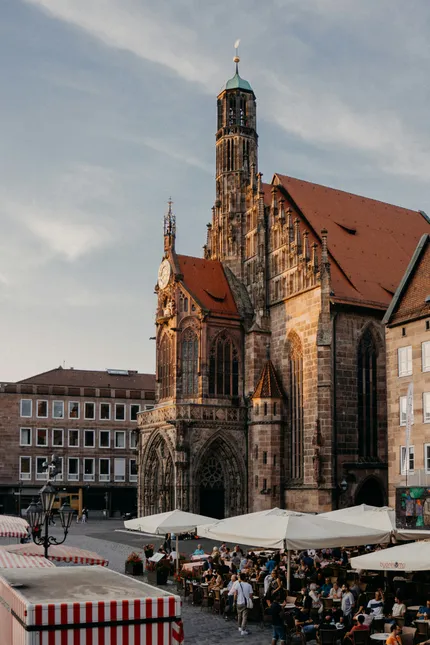
Hauptmarkt and Frauenkirche
Central square hosting the daily market and seasonal Christkindlesmarkt. Admire the Beautiful Fountain and spin its golden ring for luck. The Gothic Frauenkirche features the noon Männleinlaufen clock. Sample Nürnberger Bratwurst and Lebkuchen at stalls. Historic facades and the Old Town Hall frame the square, making it the city's liveliest hub.
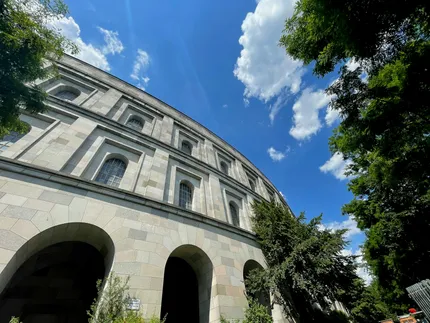
Documentation Center and Nazi Party Rally Grounds
Powerful, sobering exhibitions examine Nazi propaganda, architecture, and mass rallies at Nuremberg. Visit the Documentation Center at the Congress Hall and walk the rally grounds, including Zeppelinfeld and the Grand Road. Outdoor information panels contextualize remains. Allow time for the lakefront paths. A combined ticket and audio guide deepen understanding.
Short-break travelers who want a dense mix of medieval architecture and serious history will get the most from Nuremberg. History enthusiasts can delve into the Imperial Castle, city fortifications, and the Albrecht Dürer House, then contrast that with Courtroom 600 and the Documentation Center at the Rally Grounds for clear context on the 1930s–40s. Museum-minded visitors will appreciate the Germanisches Nationalmuseum, the DB Museum (original steam locomotives), and the Toy Museum’s hands-on rooms. Families are well served: the compact Altstadt is walkable, the Tiergarten zoo has a large forested setting, and the Playmobil FunPark in nearby Zirndorf is an easy half‑day outing in summer. Food travelers focused on regional specialties can graze on finger‑sized Nuremberg sausages, Schäufele (roast pork shoulder), and Franconian beer in atmospheric beer cellars and gardens. December city‑trippers who specifically want a traditional Christmas market will find one of Europe’s most authentic at the Hauptmarkt, with excellent side markets for children and local crafts.
Casual cyclists and runners can follow riverside paths along the Pegnitz and around Wöhrder See; photographers will find rewarding angles on Weissgerbergasse, the castle vistas, and illuminated bridges at dusk. Party seekers targeting big‑club nightlife should look elsewhere, but travelers who prefer historic ambience, substantial museums, and relaxed evenings will find Nuremberg a strong fit. Rail fans and day‑trippers also benefit from frequent regional trains to Bamberg, Bayreuth, and the Franconian Switzerland gateway.
Three top reasons for a city trip to Nuremberg
- Explore Nuremberg's walled Altstadt with Kaiserburg Imperial Castle, half-timbered houses at Tiergärtnertorplatz, cobbled lanes by the Pegnitz, St. Sebaldus and St. Lorenz churches, plus sweeping panoramic views from Sinwell Tower.
- Confront pivotal twentieth-century history at the Nazi Party Rally Grounds: Documentation Center, Zeppelin Field, and Congress Hall, visit Courtroom 600 and the Memorium Nuremberg Trials to understand justice's postwar legacy.
- Savor Nuremberg's festive flavors: Christkindlesmarkt on the Hauptmarkt with Rauschgoldengel and Zwetschgenmännla, Lebkuchen, Nürnberger Rostbratwurst served Drei im Weggla, and Franconian beer culture in Altstadt taverns and historic beer cellars.
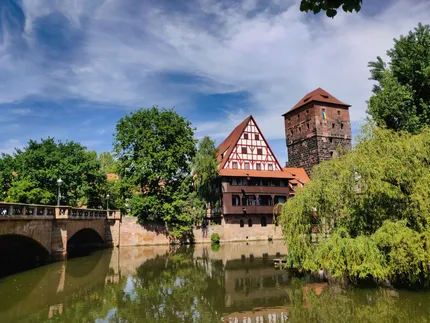
Best time to visit Nuremberg
Late spring and early autumn offer the best balance of weather and crowds. May–June and September typically bring mild, pleasant days (around 15–24°C), long daylight, and lively café terraces without peak summer congestion. July–August are warm and festive, with events like Bardentreffen and Klassik Open Air, but hotel rates rise and occasional heat waves occur. December is magical if you’re coming for the Christkindlesmarkt and seasonal concerts; expect short days, chilly temperatures, and busy streets. For lower prices and quieter attractions, consider March–April or October, when layers and a light rain jacket suffice and most museums and sights operate on regular schedules.
More activities and things to see in Nuremberg:
Memorium Nuremberg Trials (Courtroom 600)
Located at the Palace of Justice, the Memorium explains the International Military Tribunal and postwar trials through clear exhibits, interviews, and documents. When not in use, you can view Courtroom 600 from the gallery. Expect thorough context on defendants, legal precedent, and crimes. Plan 1–1.5 hours; audio guides are helpful.
Albrecht Dürer House
Half-timbered home and workshop of Renaissance master Albrecht Dürer, near the castle. Period rooms, interactive displays, and demonstrations of printmaking illuminate his techniques and life. Guided tours, sometimes with a costumed guide portraying Agnes Dürer, add color. The small museum rewards art lovers; budget about an hour and check for temporary exhibitions. Audio guides available in multiple languages.
Germanisches Nationalmuseum and Way of Human Rights
Germany's largest cultural history museum, spanning prehistoric artifacts to modern design. Highlights include medieval sculpture, Dürer's works, musical instruments, textiles, and the Way of Human Rights outside. The collection is vast; focus on themes of interest and allow 2-3 hours. Lockers and a cafe make longer visits comfortable. Temporary exhibitions rotate regularly.
St. Lorenz Church (Lorenzkirche)
Gothic landmark with soaring nave, intricate stonework, and notable art including the Angelic Salutation by Veit Stoss. Free to enter, with donation encouraged; check for organ concerts. Information panels explain wartime damage and reconstruction. Climb options are limited, but the interior's light and stained glass reward an unhurried visit. Photography permitted respectfully.
Historic City Walls and Towers
Walk along preserved sections of the 5-kilometer city walls, with moats, bastions, and gates such as Königstor and Frauentor. Towers offer viewpoints and history panels. The stretch between the castle and Handwerkerhof is especially scenic. It's free, flexible, and ideal for orienting yourself while connecting major sights around the Old Town.
Historic Rock-Cut Cellars and Beer Tradition
Guided tours lead through sandstone tunnels beneath the Old Town, carved for centuries to store beer from local breweries. Learn about Nuremberg's brewing law, air-raid use during World War II, and cellar engineering. Tours start near the Altstadthof brewery; combine with a tasting or the small Red Beer museum. Wear sturdy shoes.
Toy Museum (Spielzeugmuseum)
Celebrating Nuremberg's centuries-old toymaking tradition, the museum showcases tin figures, dolls, wooden toys, model trains, and contemporary design. Hands-on areas engage children, while exhibits trace industry and craftsmanship. It's compact yet comprehensive; allow 60–90 minutes. Combine with nearby Weißgerbergasse for colorful half-timbered houses and cafes ideal for a relaxed break.
Pegnitz River Islands: Trödelmarkt, Henkersteg and Weinstadel
Scenic riverfront quarter with cobbled lanes, timber-framed warehouses, and bridges like Henkersteg. Browse antique and design shops on Trödelmarkt island, photograph Weinstadel and Maxbrücke, and pause at riverside cafes. It's especially atmospheric at dusk. Easy to weave into an Old Town walk, with plenty of spots to sit. Great for casual photos.
Nuremberg Bratwurst and Lebkuchen Tasting
Sample local specialties: grilled Nürnberger Rostbratwurst served three in a bun or on a tin plate, and spiced Lebkuchen from traditional bakeries. Visit historic bratwurst kitchens near the Hauptmarkt and try red beer with your meal. Many shops offer tastings and gift tins; look for protected-origin labeling. Vegetarian options and coffee pairings abound.
Getting around in Nuremberg
Nuremberg’s compact Altstadt and dense center are very walkable, and most major sights cluster within or around the city walls. Cycling is practical on signed bike routes and riverside paths along the Pegnitz; bike-share (VAG_Rad/nextbike) and e‑scooters are widely available. For longer hops, public transport is excellent: three U‑Bahn metro lines, extensive trams and buses, and regional S‑Bahn link the Nuremberg–Fürth–Erlangen area. Services are integrated under VGN, with simple zone-based tickets, day passes, and mobile purchasing in the VGN app; the nationwide Deutschlandticket is valid on all local services. Night buses run on weekends. Visitors staying 2 days can consider the Nürnberg Card, which includes local transport and museum entry. Driving is not recommended in the center due to pedestrian zones, limited street parking, and an environmental (Umwelt) zone; park‑and‑ride lots at U‑/S‑Bahn stations are convenient if you have a car. Taxis and ride‑hailing cover late hours. Accessibility is good on the metro, with elevators at most stations.
Getting to Nuremberg
The nearest airport is Nuremberg Airport (NUE), about 5 km north of the center; U2 metro connects the terminal to Hauptbahnhof in roughly 12 minutes. NUE offers frequent European links and easy one‑stop connections worldwide via major hubs such as Frankfurt, Munich, Amsterdam, Zurich, Vienna, Istanbul, and London, served by a mix of network and low‑cost carriers. For rail, Nürnberg Hauptbahnhof is a major ICE/IC hub with fast, frequent trains: Munich about 1 hour, Frankfurt 2–2.5 hours, Berlin around 3 hours, Stuttgart and Leipzig roughly 2 hours. International rail connections are straightforward, with frequent one‑change services to Vienna and Prague, and good links onward to Zurich and Salzburg. Long‑distance coaches (FlixBus and others) use the ZOB next to the main station, offering budget routes to Munich, Frankfurt airports, Prague, Vienna, Zurich, and many German cities. If arriving by car, Nuremberg sits at the A3, A6, and A9 autobahn crossroads, but consider parking at a park‑and‑ride and continuing by U‑Bahn.
